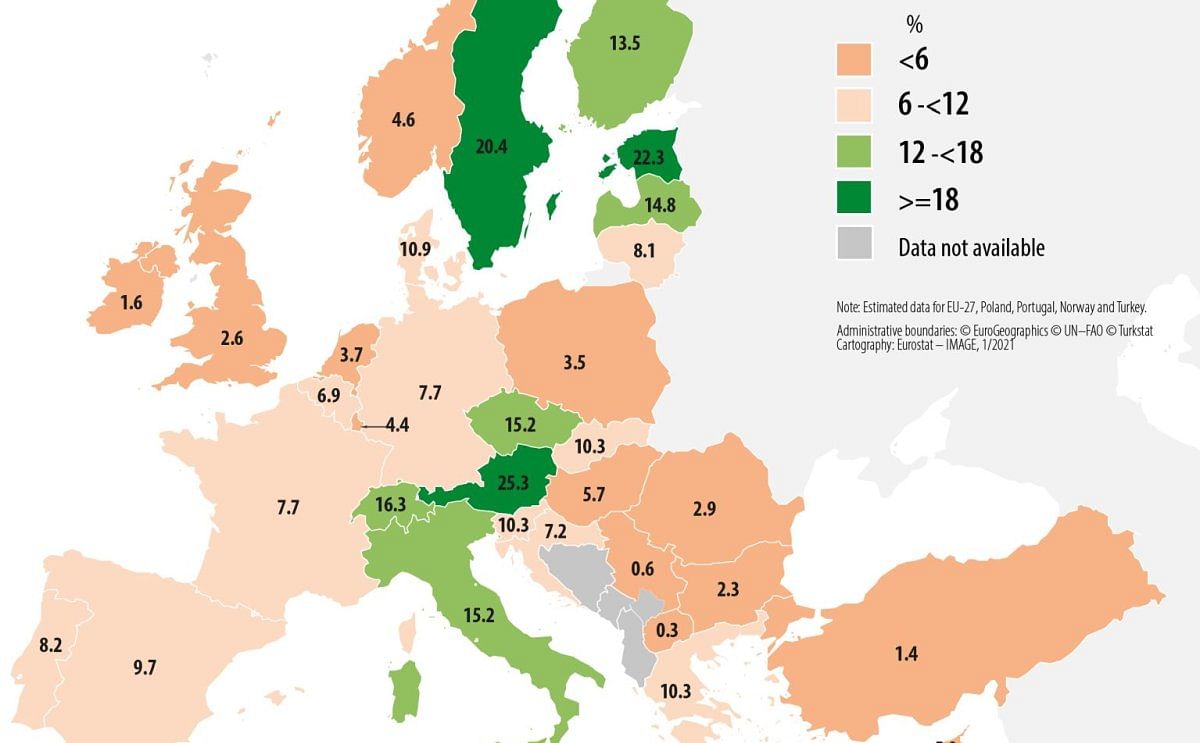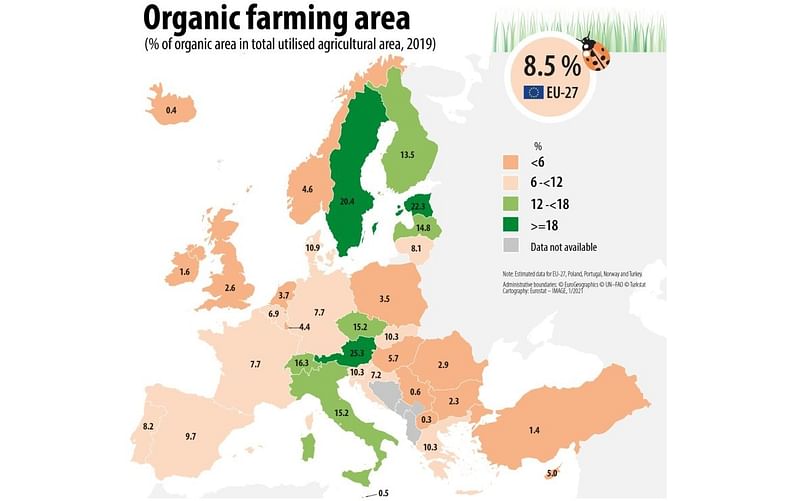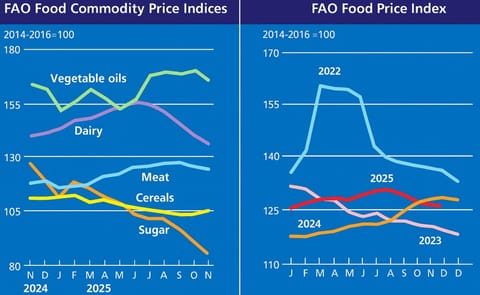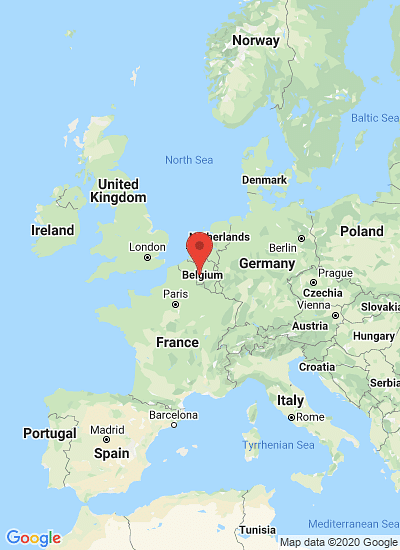Organic farming area in the EU up 46 percent since 2012
Organic farming area in the EU up 46 percent since 2012

The total organic area in the European Union (EU) was 13.8 million hectares in 2019, corresponding to 8.5% of the total utilized agricultural area. This represents an increase of 46% between 2012 and 2019.
Among the EU Member States, the countries with the largest shares of the organic area in 2019 were Austria (25.3% of the total utilized agricultural area), Estonia (22.3%), and Sweden (20.4%), followed by Czechia and Italy (both 15.2%), Latvia (14.8%) and Finland (13.5%).

Organic farming area (% of organic area in total utilized agricultural area, 2019)
Recently released data from Eurostat statistics report:
- Total organic farming area - 13.8 million hectares [as per 2019]
- It corresponds to 8.5% of the total utilized agricultural area
- Countries with the largest shares of the organic area in 2019 were Austria, Estonia & Sweden
- Sweden had the highest shares of organic cereals (7%) and fresh vegetables (19%), while Greece had the highest share of organic bovine production (27%).
EU organic farming stands for 19.3% of global agricultural land among 186 countries with organic activities. Organic share of total agricultural land reached 1.5% with the total organic market estimated at EUR 96.7 billion (FiBL survey 2020).
European Commission is currently working on the implementation of the Organic Action Plan aiming to reach a coverage of 25% of organic land by 2030.
Organic agriculture is a farming system which relies on crop rotations, the recycling of farm-produced organic materials & variety of non-chemical methods for the control of pests, diseases, and weeds.








